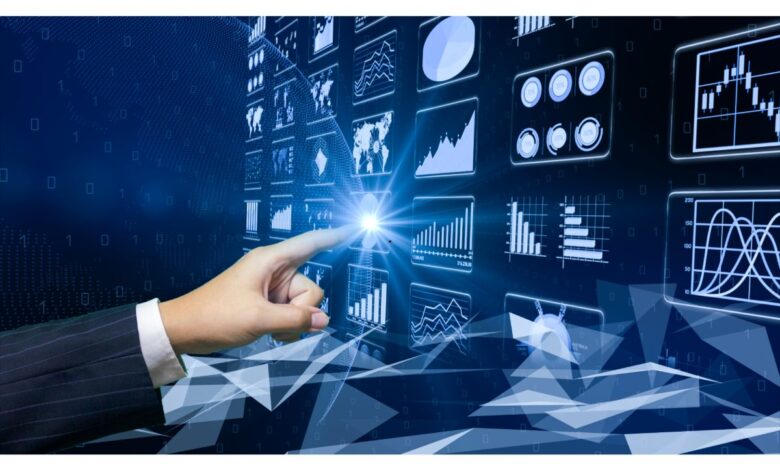
In the world of electronics and engineering, the digital multimeter (DMM) has long been an essential tool. Traditionally used to measure voltage, current, and resistance, it has served as a reliable companion for technicians, engineers, and hobbyists. But as technology advances, especially with the rise of Artificial Intelligence (AI) and the Internet of Things (IoT), the humble digital multimeter is undergoing a transformation. No longer just a simple measurement device, it is evolving into a smart, connected, and intelligent tool that integrates seamlessly into modern technology ecosystems.
From Basic Measurement to Intelligent Testing
Classic digital multimeters were designed for manual readings, requiring users to interpret and record measurements. While effective, these tools were limited in scope and required significant expertise. Today, thanks to AI integration, modern digital multimeters can analyze patterns, detect anomalies, and even suggest corrective actions. For example, a smart multimeter equipped with AI algorithms can recognize irregular voltage fluctuations and notify the user about potential issues such as component failure or wiring faults.
This shift from passive measurement to proactive problem-solving represents a new era in test equipment. Engineers are no longer just gathering data—they are gaining actionable insights in real time.
The Role of IoT in Connectivity
One of the most profound changes in digital multimeter technology is the introduction of IoT connectivity. IoT-enabled multimeters can now transmit data wirelessly to smartphones, tablets, or cloud platforms. This eliminates the need for manual data logging and allows for remote monitoring, which is particularly useful in industrial and large-scale projects.
For instance, an IoT-enabled multimeter can be deployed in a solar power installation to continuously monitor system performance. The device can transmit live data to a central dashboard, where engineers can monitor multiple systems across different locations simultaneously. If an anomaly is detected, alerts can be sent instantly, allowing for quicker response times and reducing downtime.
AI-Powered Predictive Maintenance
AI doesn’t just make multimeters smarter—it enables predictive maintenance. By analyzing historical measurement data, AI-powered multimeters can predict when a component is likely to fail. Instead of reacting to breakdowns, engineers can now anticipate problems before they occur.
This has huge implications for industries such as manufacturing, energy, and telecommunications, where downtime can be costly. Predictive maintenance driven by AI-powered multimeters not only reduces operational costs but also improves safety by identifying risks early.
Enhancing Precision with Machine Learning
Machine learning algorithms are also being integrated into digital multimeters to enhance accuracy. Traditional measurements may be affected by environmental factors like temperature, electromagnetic interference, or human error. Smart multimeters equipped with machine learning can calibrate themselves in real time, compensating for these variables to deliver more reliable results.
Over time, these devices “learn” from repeated use, becoming increasingly accurate and efficient. For engineers working on high-precision projects—such as medical devices, aerospace systems, or advanced robotics—this level of precision is invaluable.
Remote Collaboration and Cloud Integration
IoT-enabled digital multimeters also support cloud integration, which is reshaping how teams collaborate. In a world where remote work is increasingly common, cloud-connected multimeters allow data to be shared instantly across teams, regardless of location.
Imagine a scenario where an engineer in Nairobi is testing a circuit while their colleague in Cape Town monitors the results in real time. Through cloud-based dashboards, both can analyze data, troubleshoot issues, and make decisions collaboratively. This level of connectivity accelerates innovation and makes global teamwork seamless.
Applications Across Emerging Technologies
The transformation of digital multimeters through AI and IoT is not limited to traditional electronics—it extends into emerging fields:
- Renewable Energy: Smart multimeters can track energy flow in solar panels and wind turbines, ensuring optimal efficiency.
- Smart Homes: IoT-connected multimeters can diagnose issues in smart devices, home automation systems, and connected appliances.
- Electric Vehicles (EVs): As EV adoption grows, multimeters play a critical role in testing batteries, charging stations, and power electronics.
- Robotics & AI Systems: AI-powered multimeters help maintain precision in robotics by ensuring stable power supply and system integrity.
- Industrial IoT (IIoT): In factories, IoT-enabled multimeters are part of larger connected ecosystems that monitor machines, reduce downtime, and improve safety.
Challenges and Future Outlook
While AI and IoT bring remarkable advancements, they also introduce challenges. Cybersecurity becomes a major concern when devices are connected to the internet. Ensuring secure data transmission and preventing unauthorized access is critical. Additionally, the cost of advanced AI-powered multimeters can be a barrier for small businesses or hobbyists.
However, as technology matures, costs will likely decrease, and adoption will become more widespread. The future could see multimeters that not only measure and predict but also self-heal, automatically recalibrating or updating their software via over-the-air updates. Integration with augmented reality (AR) could further enhance usability, allowing users to visualize measurements in 3D or overlay data directly on components.
Conclusion
The digital multimeter is no longer just a tool for measurement—it is becoming an intelligent partner in the era of AI and IoT. From predictive maintenance to remote collaboration, these devices are evolving to meet the demands of a connected and data-driven world. As industries continue to innovate, the multimeter’s transformation underscores a broader truth: even the simplest tools can become revolutionary when empowered by technology.
In the coming years, AI and IoT will ensure that digital multimeters remain indispensable, not just as instruments, but as intelligent systems that actively shape the future of technology.




